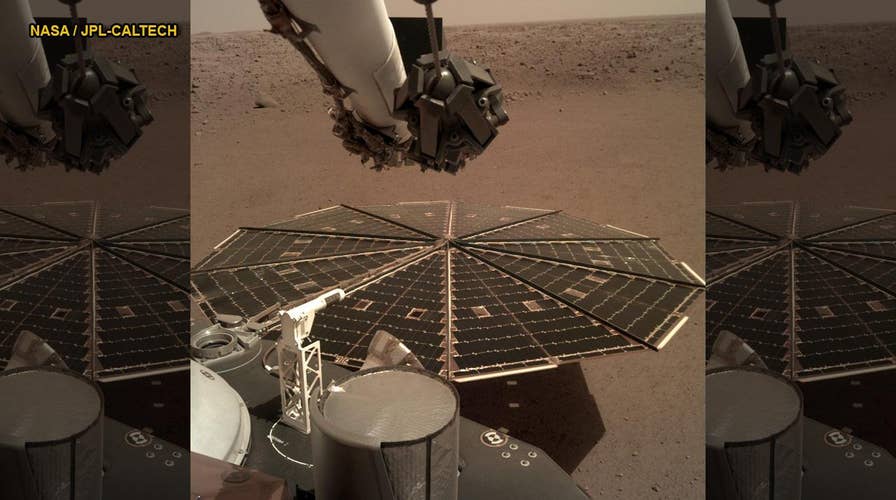NASA releases first-ever audio recording from Mars
Sensors on NASA's Mars InSight Lander have captured the first 'sounds' of Martian wind. In a NASA video captured on Dec. 1 when the Martian wind was blowing between 10 to 15 mph, the wind vibrations can be heard as a low rumble, after being raised two octaves to be more perceptible to the human ear.
David Bowie’s ‘Ziggy Stardust’ alter ego would be impressed … NASA has released the first-ever audio recording from the surface of Mars.
The Mars InSight Lander reached the surface of the Red Planet on Nov. 26 after an epic journey of more than 300-million miles that lasted six months. Sensors on the lander have now captured the first “sounds” of Martian wind.
In a video courtesy of the space agency, the wind vibrations are raised two octaves to be more perceptible to the human ear, can be heard as a low rumble. NASA described the sound as “haunting,” noting that the vibrations were captured on Dec. 1 when the Martian wind was blowing between 10 to 15 mph.
NASA’S INSIGHT MARS LANDER ARRIVES ON THE RED PLANET, ENDS SUCCESSFUL JOURNEY
"Capturing this audio was an unplanned treat," said Bruce Banerdt, InSight principal investigator at NASA's Jet Propulsion Laboratory (JPL) in Pasadena, Calif., in a statement. "But one of the things our mission is dedicated to is measuring motion on Mars, and naturally that includes motion caused by sound waves."
The vibrations were captured by an air pressure sensor inside the Lander and a seismometer on the Lander’s deck.
NASA will be sending back much clearer sounds from Mars in the coming years. The space agency’s Mars 2020 rover will land on the Red Planet with two microphones on board. The first sensor, built by JPL, will, for the first time, record the sound of a Mars landing. The second sensor is part of the rover’s SuperCam and will detect the sound of the research instrument’s laser as it “zaps” different materials on the Martian surface.
NASA PICKS LANDING SPOT FOR MARS 2020 ROVER IN HUNT FOR ALIEN LIFE
Last month, NASA announced that it has selected the location where its Mars 2020 Rover will land on the Red Planet. The rover is expected to reach the Martian surface on Feb. 18, 2021.
NASA’s long-term goal is to send a manned mission to Mars in the 2030s. However, former astronaut Buzz Aldrin thinks that a slightly later target date of 2040 is more realistic. In an interview in 2016, the Gemini 12 and Apollo 11 astronaut told Fox News that by 2040, astronauts could have visited Mars’ moon Phobos, which could serve as a sort of stepping stone to the Red Planet.
Fox News’ Chris Ciaccia and The Associated Press contributed to this article. Follow James Rogers on Twitter @jamesjrogers
